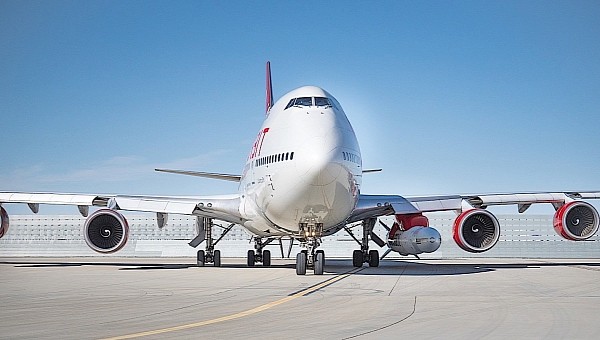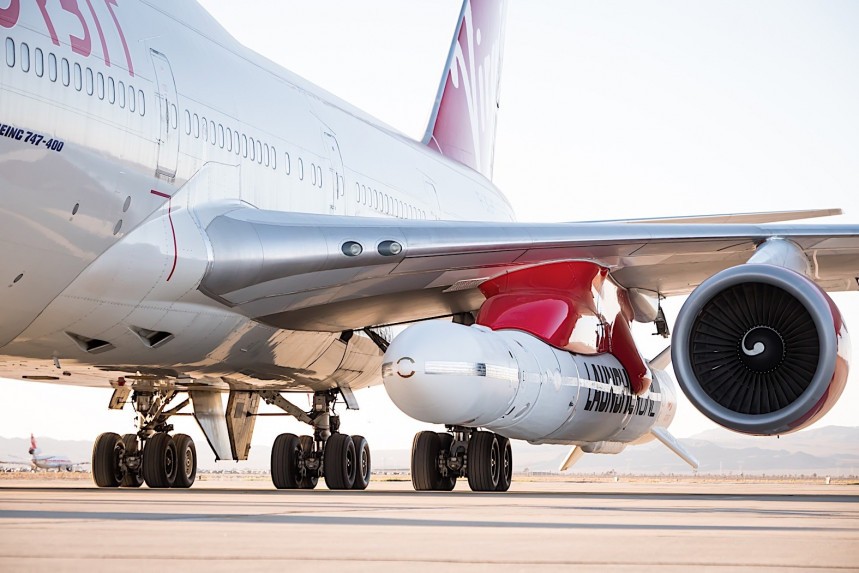2023 kicked off with a bang for space company Virgin Orbit. The group was excited about the launch of a mission called Start Me Up (a name inspired by a Rolling Stones hit from the 1980s), which was supposed to mark a series of firsts.
Back in January 2023, a rocket called LauncherOne, carrying inside it hardware for seven paying customers, was attached to the left wing of a Boeing 747 called Cosmic Girl. The plane departed Spaceport Cornwall in the UK, marking the first satellite launch take-off from British soil. It was also Virgin Orbit’s first international launch (the company usually operates out of the Mojave Air and Spaceport in California) and the first commercial launch from western Europe. And it failed.
Most of the mission went just as planned. The Boeing aircraft left the runway, climbed to the target altitude, and the Big Red Button which releases the rocket was pressed, letting the thing loose. Its engines ignited, it went supersonic and crossed the Karman line into space.
After stage separation, with the rocket moving at speeds of 11,000 mph (17,700 kph), the second stage ignited, but didn’t burn for long enough to allow the rocket to reach its assigned orbit. It came crashing down, burning in the atmosphere in the vicinity of the Canary Islands.
Virgin Orbit immediately launched an investigation into what went wrong and now, just a little over a month later, the first conclusions are in. And the fault seems to fall on a fuel filter.
As per the company, as soon as the burn of the second stage began, a fuel filter fitted in the fuel feedline somehow moved from its required position. As a result of this movement, the fuel pump located further down didn’t work as it should have, starving the rocket’s engine of much needed fuel.
Because these were not normal circumstances, the engine overheated, affecting some of the components around it. When enough malfunctions have cascaded into a perfect storm, the second stage cut off, ending the mission and leading to the ultimate destruction of LauncherOne and its cargo.
The investigation is not yet over, but Virgin Orbit is quite sure it found the culprit and announced it will modify existing LauncherOnes by fitting them with a more resistant filter.
It’s unclear at this point when Virgin Orbit will resume operations, but we're told we should learn more over the next few weeks. Not taking into account the UK mission, the company raised the Boeing and launched the rocket four times before, and all went without a hitch each time.
Virgin Orbit is one of the few companies that don’t use a traditional launch pad for its missions. The key to its success is not the Boeing carrier plane or the approach itself, but the LauncherOne rocket.
The two-stage piece of hardware is powered by engines called Newton, and it’s meant to transport relatively small and light cargo into space: it can carry just 500 kg (1,100 pounds) of hardware to equatorial orbit and a little more than half that to heliosynchronous orbit.
Most of the mission went just as planned. The Boeing aircraft left the runway, climbed to the target altitude, and the Big Red Button which releases the rocket was pressed, letting the thing loose. Its engines ignited, it went supersonic and crossed the Karman line into space.
After stage separation, with the rocket moving at speeds of 11,000 mph (17,700 kph), the second stage ignited, but didn’t burn for long enough to allow the rocket to reach its assigned orbit. It came crashing down, burning in the atmosphere in the vicinity of the Canary Islands.
Virgin Orbit immediately launched an investigation into what went wrong and now, just a little over a month later, the first conclusions are in. And the fault seems to fall on a fuel filter.
As per the company, as soon as the burn of the second stage began, a fuel filter fitted in the fuel feedline somehow moved from its required position. As a result of this movement, the fuel pump located further down didn’t work as it should have, starving the rocket’s engine of much needed fuel.
The investigation is not yet over, but Virgin Orbit is quite sure it found the culprit and announced it will modify existing LauncherOnes by fitting them with a more resistant filter.
It’s unclear at this point when Virgin Orbit will resume operations, but we're told we should learn more over the next few weeks. Not taking into account the UK mission, the company raised the Boeing and launched the rocket four times before, and all went without a hitch each time.
Virgin Orbit is one of the few companies that don’t use a traditional launch pad for its missions. The key to its success is not the Boeing carrier plane or the approach itself, but the LauncherOne rocket.
The two-stage piece of hardware is powered by engines called Newton, and it’s meant to transport relatively small and light cargo into space: it can carry just 500 kg (1,100 pounds) of hardware to equatorial orbit and a little more than half that to heliosynchronous orbit.































